From smashing social boundaries to chasing Pokemon, the power of Japanese manga to inspire and entertain fans around the world surges forth in a major London show that opened yesterday.
The largest ever manga exhibition to be held outside of Japan takes visitors to the British Museum on a journey from the art form’s traditional roots to the multibillion dollar industry of today.
“Manga is the most popular form of storytelling today,” British Museum director Hartwig Fischer said at the launch of the “Citi Exhibition Manga.”
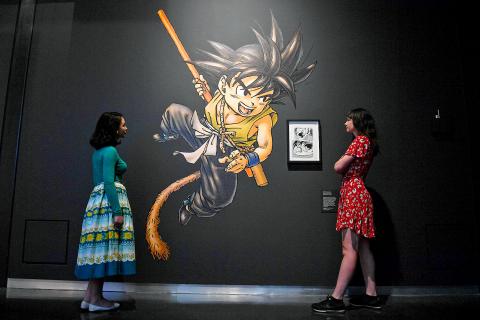
Photo: AFP
Displays trace manga’s evolution from the comics and dramatic designs by famous Japanese artists such as Katsushika Hokusai (1760-1849) to the global phenomenon of Pokemon and the Oscar-winning animations of Studio Ghibli.
“It’s something about the engagement that makes manga special,” said Nicole Rousmaniere, curator of Japanese arts. “It’s visual language that relays content very, very quickly. This is because of the power of the line. I believe that in Japan it makes a lot of sense that when you are doing calligraphy, when you are looking at characters, your brain is already conditioned to have that pictorial content.”
Visitors learn how to properly read manga, which translates as “pictures run riot,” and about the influence of “god of manga” Osamu Tezuka (1928-1989), who created iconic characters Mighty Atom (later known as Astro Boy) and Princess Knight.
Delicate stills from hit franchise Dragon Ball are also on display, as well as more visceral works exploring complex themes.
“It’s about telling stories for a lot of people who feel their stories aren’t being told,” Rousmaniere said. “It’s always been edgy, drawn by people who feel a little bit different... You don’t have to have money to be able to draw manga, you can just draw it on a scrap of paper, many people did.”
One such artist on display is Gengoroh Tagame, one of the most influential creators of gay manga and known for his graphic depictions of sadomasochism.
“Manga is a very casual media, so to read manga is very easy ... and using manga to show social issues is very powerful,” Tagame said.
Further dispelling the notion that cartoons are only for children, there are also harrowing works addressing the nuclear bombing of Hiroshima and the 1995 Kobe earthquake.
On a lighter note, visitors to the museum can pose for instantly generated digital images of themselves in various manga styles.
The industry had a global turnover of US$3.8 billion in 2016 and lends itself to cross-platform franchising, with the result that its popularity is only likely to increase with the technology boom.
Manga characters are also commonly used as avatars by Internet users creating alternative online identities.
“There is a manga for everyone, literally every subject,” Rousmaniere said.
However, the ability to digitally create manga poses a threat to fans of traditional manga, she added.
“I think hand-drawing will eventually die out... I just hope we can then preserve them,” she said.
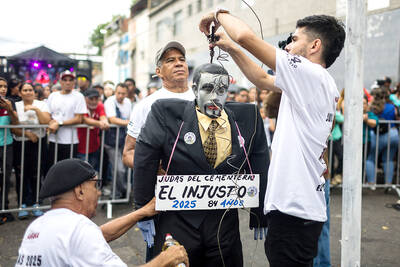
POLITICAL PRISONERS VS DEPORTEES: Venezuela’s prosecutor’s office slammed the call by El Salvador’s leader, accusing him of crimes against humanity Salvadoran President Nayib Bukele on Sunday proposed carrying out a prisoner swap with Venezuela, suggesting he would exchange Venezuelan deportees from the US his government has kept imprisoned for what he called “political prisoners” in Venezuela. In a post on X, directed at Venezuelan President Nicolas Maduro, Bukele listed off a number of family members of high-level opposition figures in Venezuela, journalists and activists detained during the South American government’s electoral crackdown last year. “The only reason they are imprisoned is for having opposed you and your electoral fraud,” he wrote to Maduro. “However, I want to propose a humanitarian agreement that
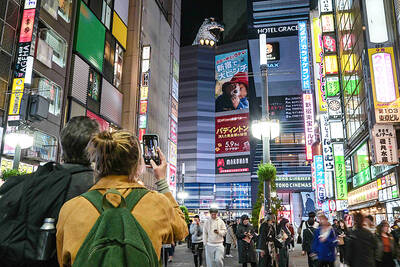
Young women standing idly around a park in Tokyo’s west suggest that a giant statue of Godzilla is not the only attraction for a record number of foreign tourists. Their faces lit by the cold glow of their phones, the women lining Okubo Park are evidence that sex tourism has developed as a dark flipside to the bustling Kabukicho nightlife district. Increasing numbers of foreign men are flocking to the area after seeing videos on social media. One of the women said that the area near Kabukicho, where Godzilla rumbles and belches smoke atop a cinema, has become a “real
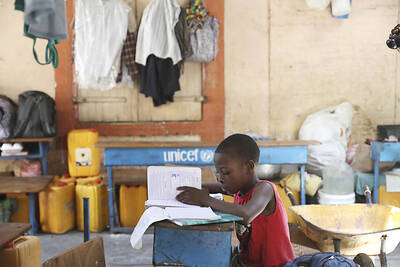
‘POINT OF NO RETURN’: The Caribbean nation needs increased international funding and support for a multinational force to help police tackle expanding gang violence The top UN official in Haiti on Monday sounded an alarm to the UN Security Council that escalating gang violence is liable to lead the Caribbean nation to “a point of no return.” Special Representative of the UN Secretary-General for Haiti Maria Isabel Salvador said that “Haiti could face total chaos” without increased funding and support for the operation of the Kenya-led multinational force helping Haiti’s police to tackle the gangs’ expanding violence into areas beyond the capital, Port-Au-Prince. Most recently, gangs seized the city of Mirebalais in central Haiti, and during the attack more than 500 prisoners were freed, she said.
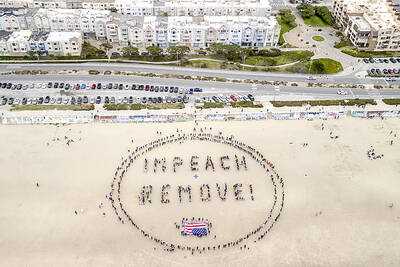
DEMONSTRATIONS: A protester said although she would normally sit back and wait for the next election, she cannot do it this time, adding that ‘we’ve lost too much already’ Thousands of protesters rallied on Saturday in New York, Washington and other cities across the US for a second major round of demonstrations against US President Donald Trump and his hard-line policies. In New York, people gathered outside the city’s main library carrying signs targeting the US president with slogans such as: “No Kings in America” and “Resist Tyranny.” Many took aim at Trump’s deportations of undocumented migrants, chanting: “No ICE [Immigration and Customs Enforcement], no fear, immigrants are welcome here.” In Washington, protesters voiced concern that Trump was threatening long-respected constitutional norms, including the right to due process. The